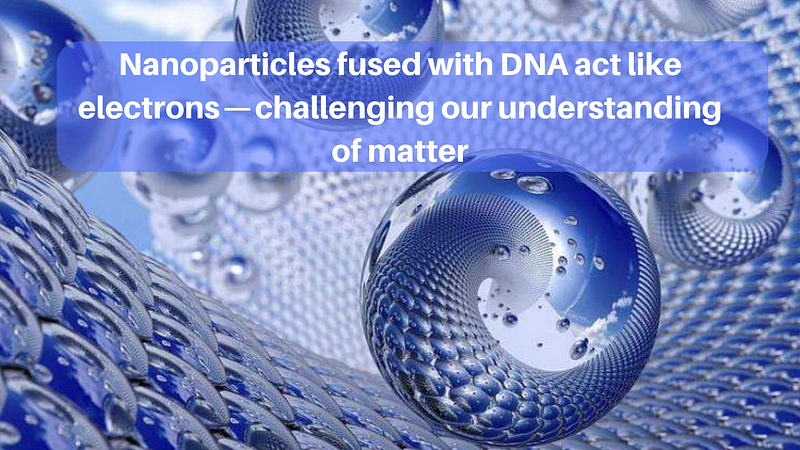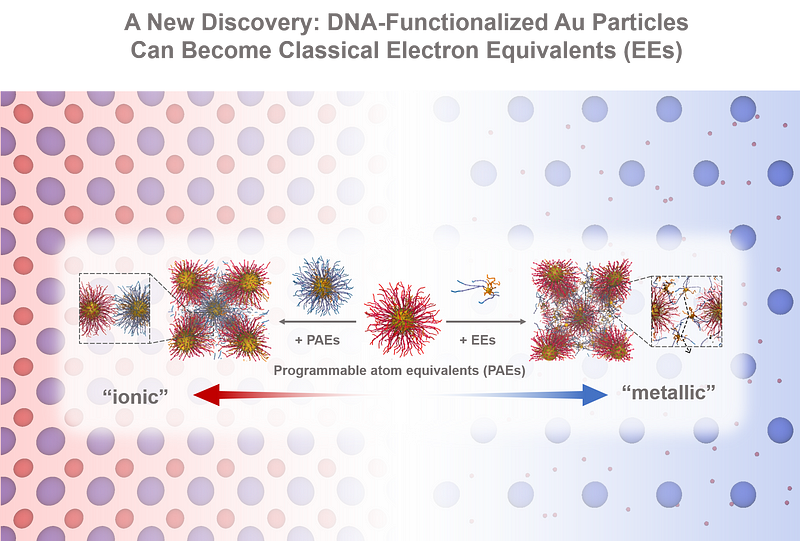Revolutionary Discovery: DNA-Fused Nanoparticles Mimic Electrons
Written on
Chapter 1: Introduction to Nanoparticles and Their Properties
Recent advancements in nanotechnology have unveiled a remarkable phenomenon: nanoparticles combined with DNA display behaviors akin to those of electrons. This unexpected finding, published in the journal Science, challenges our traditional understanding of matter and paves the way for groundbreaking material innovations.
Monica Olvera de la Cruz from Northwestern University, who led the initial computational studies, expressed her astonishment: “What we observed is unprecedented. Our simulations depicted these particles moving similarly to orbiting electrons.”
The term ‘metallicity’ has been introduced to characterize this behavior, referring to the electron mobility seen in metals. In colloidal crystals, these minuscule nanoparticles traverse in a manner reminiscent of electrons, effectively acting as a cohesive force for the material.

Section 1.1: The Significance of Metallicity
Chad Mirkin, who spearheaded the experimental work, emphasized the potential implications of this discovery: “This will prompt a reevaluation of how we perceive matter. It could lead to the development of materials with remarkable properties never before seen, potentially revolutionizing fields such as optics, electronics, and catalysis.”
Olvera de la Cruz holds the title of Lawyer Taylor Professor of Materials Science and Engineering at Northwestern’s McCormick School of Engineering. Meanwhile, Mirkin is the George B. Rathmann Professor of Chemistry in Northwestern’s Weinberg College of Arts and Sciences. His group previously pioneered the chemistry for constructing colloidal crystals with DNA, creating opportunities for innovative material designs.
“Over the last twenty years, we have developed methods to construct a variety of crystalline frameworks where DNA effectively positions the nanoparticles precisely within a lattice,” Mirkin remarked, as the founding director of the International Institute of Nanotechnology.
Subsection 1.1.1: The Evolution of Nanoparticle Sizing
Traditionally, the nanoparticles used in these studies measured in the tens of nanometers. These larger particles remained stationary, secured in place by DNA strands. However, the recent study involved reducing the particles to a mere 1.4 nanometers in diameter within computational simulations, leading to extraordinary results.

Section 1.2: Observations from Experimental Studies
Olvera de la Cruz noted the differences in particle linkages: “The larger particles are interconnected by hundreds of DNA strands, whereas the smaller ones have only four to eight connectors. When these connections break, the smaller particles can roll and migrate, helping to stabilize the lattice of larger particles.”
Upon conducting experiments to visualize these smaller particles, Mirkin’s team confirmed the computational findings, observing behaviors akin to those of electrons in metals. This led to the designation of ‘metallicity’ for the observed behavior.
Mirkin elaborated: “In metals, a sea of electrons flows freely, serving as a binding agent for the entire structure. These nanoparticles take on that role, becoming the dynamic glue that maintains cohesion.”
Chapter 2: Future Directions and Applications
The next steps for Olvera de la Cruz and Mirkin involve investigating how to harness these electron-like particles to engineer new materials with desirable properties. Although their research focused on gold nanoparticles, Olvera de la Cruz indicated that the concept of ‘metallicity’ could apply to other particle types within colloidal crystals.
Mirkin concluded: “Discovering a new property in science is rare, yet that is precisely what we have achieved here. This challenges our fundamental understanding of material construction, marking a significant milestone with lasting implications.”
This video features Stephen Fielden discussing the controlled fusion of polymer nanoparticles, shedding light on the techniques and implications of this novel research.
In this video, the concept of nanoparticles fused with DNA is explored, showcasing how they behave like electrons and how this challenges our current understanding of matter.